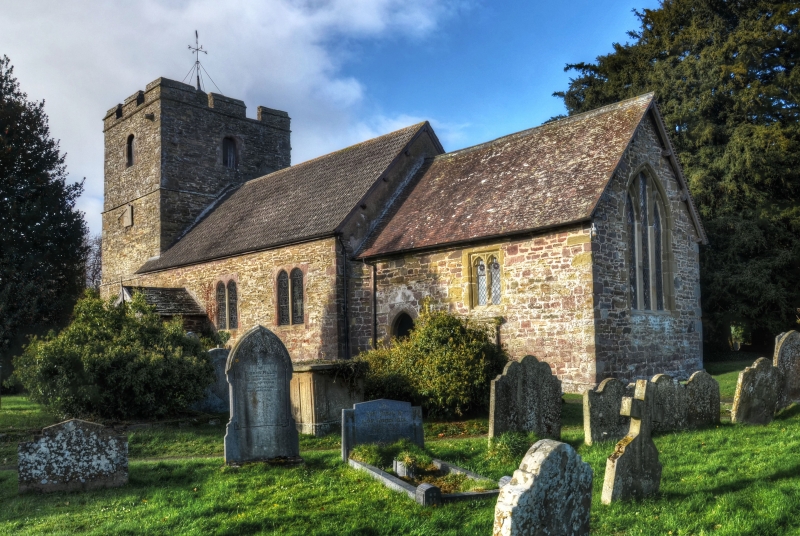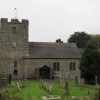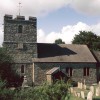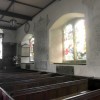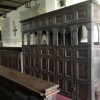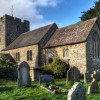Uploader's Comments
The Church of St John the Baptist in Stokesay, Shropshire, is a rare example of the Commonwealth style (having been rebuilt during the Commonwealth of England under Oliver Cromwell's rule).
The church was originally built in about 1150 as a chapel to the adjacent Stokesay Castle by the Say family who had come over with William the Conqueror. The Says came here about 1105 via Clun. The 'Stoke' part of the place-name means a 'dependent settlement' or a 'dairy farm' and implies a fenced off area.
In 1646 a Royalist party with their horses took refuge in the church, but they were driven out by Parliamentarians who had captured the castle. Much of the church was destroyed in the battle: the south side of the nave, facing the castle, was destroyed entirely, probably by canon shot. The north side was not damaged so severely: here the jambs run half-way up the single-light windows, showing that up to this height the wall probably survived the Civil War bombardment.
The Nave of the church is a rare act of church building in Puritan times. Its date (1654) can just be seen on the tablet at the head of the tower arch. The walls of the church display several attempts at decoration in a devotional manner.
Simon Jenkins regards this Grade I-listed church as one of England's Thousand Best Churches.
Source: www.westgallerychurches.com/salop/Stokesay/Stokesay.html
Uploaded by Barry Richardson on 11 November 2020
